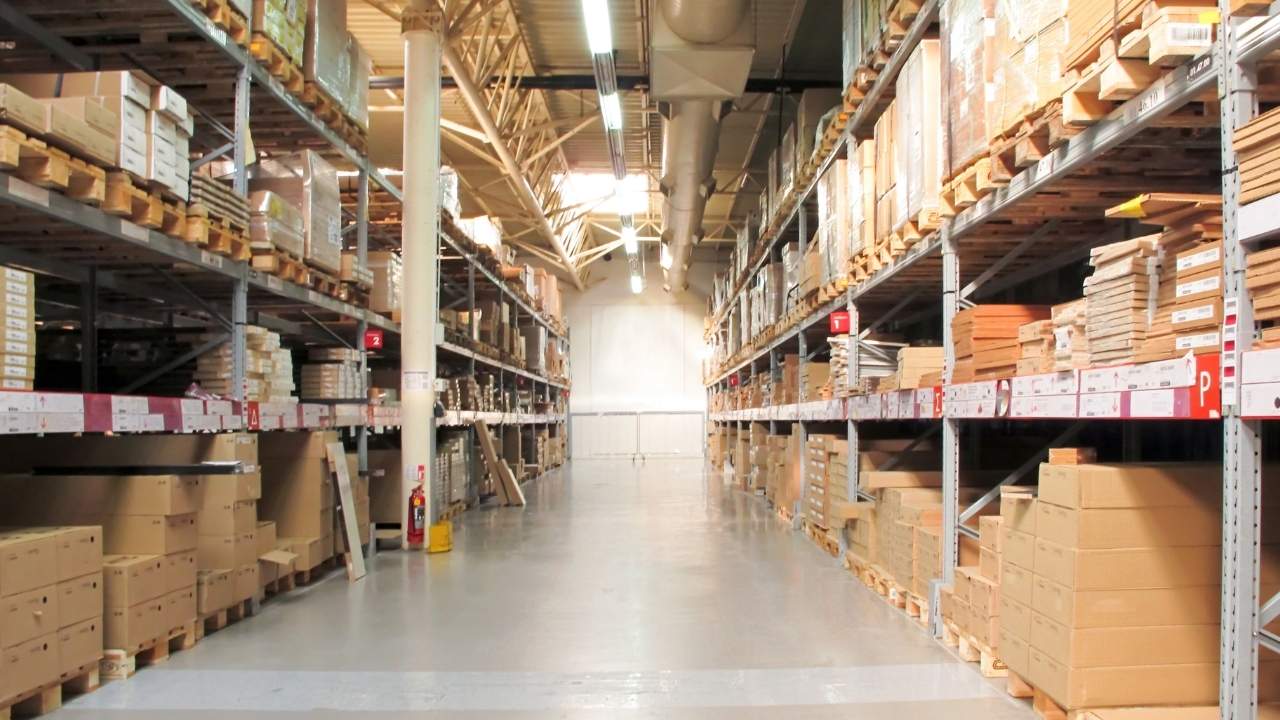The integration of Shopify and ERP systems offers a potent solution to the perennial retail stock-out problem
Empty shelves and “out of stock” notices have become woefully common across retail stores. Over 75% of retailers face frequent stockouts, causing substantial revenue losses averaging 3-10% annually. Even more alarmingly, 33% of customers will abandon a retailer after just one stockout. This article will unpack the underlying triggers of the retail stockout endemic, quantify its financial and brand damages, and demonstrate how retailers can leverage Shopify and ERP systems to systematically eliminate inventory gaps.
The Crippling Impact of Retail Stock-outs – Far Beyond Lost Sales
At first glance, the main consequence of a stockout seems to be the immediate lost sale. However, the ripples spread much wider:
- Average stockout causes over 15 lost sales of that item over the following two months due to back-ordered customers and product availability gaps even after restocking
- For fast-moving essentials like food and beverages, a stockout drives a 50% chance of losing that customer to a competitor permanently
- Only 40% of retailers can even quantify the full business impact of stockouts – leaving massive blind spots in operational decision-making
Today Brands simply cannot afford to lose hard-won customers due to inventory mismanagement. The ability to guarantee product availability has become table stakes.
How Shopify and ERP Jointly Tackle the Endemic of Retail Stock-Outs
- Omnichannel inventory visibility and optimization
- Automated, data-driven inventory replenishment
- Predictive analytics detecting demand shifts weeks in advance
- Dynamic safety stock buffers via machine learning
Armed with these joint capabilities, retailers can finally conquer the retail stockout endemic through data-driven inventory resilience and availability. The prize? Recapturing 3-10% revenue and 33% customer retention while futureproofing one of retail’s most perilous threats.
Key Drivers Behind the Omnichannel Retail Stockouts
Several interlinked factors have perpetuated deficient in-stock rates and thus an epidemic of retail stockouts, including:
- Siloes Visibility: Disjointed inventory tracking across brick-and-mortar stores, e-commerce, and wholesale channels obstructs unified visibility into true stock levels.
- Volatile Demand: Promotions, reviews, and viral trends spontaneously spike product demand at unpredictable amplitudes, overwhelming safety stock buffers.
- Forecasting Failures: Relying solely on outdated demand history renders predicting future spikes and lulls in demand innately fragile.
- Inflexible Supply Chains: Rigidity magnifies susceptibility to external or internal supply chain disruptions delaying inventory replenishment.
- Seasonal Shifts: Holiday sales surges and summer inventory buildups routinely catch merchants off-guard despite their annual predictability.
Unlocking the Power of Unified Shopify and ERP Capabilities for Retail Stock Outs
Integrating Shopify agility with ERP supply chain insights unlocks tangible upside for tackling retail stockout triggers through:
- Omnichannel Visibility: Centralizing inventory data from all sales and fulfillment nodes provides a singular version of the record for stock positions.
- Automated Replenishment: Trigger automated purchase orders and supplier workflows when inventory levels dip below predefined thresholds.
- Intelligent Forecasting: Ingest billions of external signals alongside historical data to train predictive machine learning algorithms calibrated by channel.
- Dynamic Safety Stocks: Use probabilistic demand modeling to scientifically optimize safety stock targets balancing availability and working capital.
These jointly wielded capabilities drive extreme inventory reliability by embedding responsiveness and resilience to fluctuating market dynamics.
Unleashing Shopify-ERP for Elevated Inventory Performance
Beyond just preventing retail stock-outs, the powerful combination of ERP analytics and Shopify capabilities enables data-driven initiatives to optimize inventory management holistically:
Optimizing Strategic Inventory Placement
- Map historical sales data by product to visualize demand across locations
- Use algorithms to realign stock levels optimally at each store
- Suggest transferring inventory between stores to maximize availability
Automating Replenishment Based on Real Demand
- Monitor sales velocity, aging inventory, and supplier dynamics per item
- Customize reorder points and automate purchase orders matching localized demand
Allocating Inventory Intelligently Across Channels
- Forecast demand separately for online, retail, wholesale, etc.
- Distribute stock optimally based on projected channel demand
Refining Product Assortments
- Analyze sales, costs, and cannibalization effects per SKU
- Optimize mix to maximize productivity and eliminate redundancies
Implementing these data-driven strategies can drive 2-5% higher sales, 25-50% less excess stock, 10-15% faster inventory turns, and zero stockouts. Beyond the financial benefits, guaranteed product availability boosts consumer satisfaction and loyalty.
Conquering Retail Stockouts With Shopify-Optimized Versa ERP
Don’t let stockouts derail your e-commerce success story. Experience firsthand how Versa Cloud ERP’s unparalleled integration with Shopify can obliterate these inventory pitfalls once and for all. Our battle-tested solutions equip you with the unbeatable competitive edge of omnichannel inventory visibility, predictive demand forecasting driven by machine learning, automated replenishment workflows, and optimized safety stock algorithms.
Whether you’re a fast-growing startup or an established enterprise brand, Versa Cloud ERP provides the foundational strength to fortify your stockout prevention defenses. Streamline fulfillment, enhance accounting accuracy, monitor performance with pinpoint analytics, and implement multi-faceted inventory excellence strategies – all seamlessly unified with your Shopify storefront.
Schedule a free, personalized demo of Versa Cloud ERP tailored to your unique business requirements. Unlock the full potential of the Shopify/ERP synergy and emerge victoriously from the stockout warzone, delighting customers with flawless inventory availability across every channel. Protect your profits, safeguard your brand loyalty, and dominate your market by becoming an unstoppable stockout slayer.
FAQ’s
1. How much safety stock should I carry to prevent stockouts?
Safety stock targets should balance the opportunity cost of excessive inventory against the risks of stocking out. Advanced machine learning algorithms factor in historical volatility, recent demand shifts, and lead times across products to scientifically optimize safety stock levels by SKU. Generally, 15-25% above average demand is reasonable.
2. How can I tell if my inventory management processes are optimized?
Track metrics like inventory turn rate, excess stock rate, and days of supply by product category and channel. If turn rates fall below 4x annually or excess stocks persist, recalibration is needed. Optimized processes keep days of supply around 30. Continually monitoring KPIs identifies improvement areas.
3. What’s the best way to avoid retail stock-outs during major sales events?
Analyze data from past promotions to quantify demand surges by product. Simulate different inventory buffering approaches in ERP to determine optimal levels. Place early replenishment orders with suppliers specifying delivery timelines aligned to your sales event. Implement overflow policies to route inventory across channels to high-demand areas.
4. How can I incorporate external signals into my demand forecasts?
ERP systems feature machine learning capabilities to ingest billions of external data points – from weather reports to competitive promotions – that impact demand. The algorithms automatically identify relevant signals and quantify their correlation to sales velocities by product and channel. This provides a 360-degree perspective of the market dynamics influencing your customers.
5. How often should inventory records be reconciled?
Maintaining extremely precise inventory counts is vital, so reconciliation should occur daily or weekly. Miscounts trickle into damaging ramifications like undetected stockouts or excessive write-offs. ERP can automate routine cycle counts and immediately flag discrepancies for investigation while self-correcting forecast models. Ongoing accuracy preserves the integrity of planning and replenishment decisions.
Effectively manage your financials, accounting, inventory, production, warehouse management, Shopify Store, and order fulfillment workflows with our award-winning ERP.
Let Versa Cloud Erp’s do the heavy lifting for you.
Empower your business with the knowledge to navigate the realm of an Integrated ERP solution. Gain insights, streamline processes, and propel your accounting management to new heights with this comprehensive guide.
With Versa Cloud ERP’s Implementation guide learn how a business can ensure a successful ERP Solution Implementation. Navigate the complexities of implementation with confidence!
A Small Business in the modern day with Omnichannel Retail is complex and requires resources to deliver on its goals and achieve its full potential. To create a small business success story business owners need an ERP Solution that grows with them.
[widget id=”custom_html-40″]
[widget id=”custom_html-42″]
[widget id=”custom_html-30″]
Do Business on the Move!
Make your businesses hassle-free and cut the heavyweights sign up for the Versa Cloud ERP today!!
Join our Versa Community and be Future-ready with us.
[widget id=”custom_html-20″]






